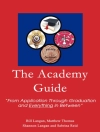The building of human towers ( castells ) is a centuries-old traditional sport where hundreds of men, women, and children gather in Catalan squares to create breathtaking edifices through a feat of collective athleticism. The result is a great spectacle of effort and overcoming, tension and release.
Catalonia’s Human Towers is an ethnographic look at the thriving castells practice—a symbol of Catalan cultural heritage and identity amid debates around national autonomy and secession from Spain. While the main function of building castells is to grow community through a low-cost, intergenerational, and inclusive leisure activity, Mariann Vaczi reveals how this unique sport also provides a social base, image, and vocabulary for the independence movement.
Highlighting the intersection of folklore, performance, and sport, Catalonia’s Human Towers captures the subtle processes by which the body becomes politicized and ideology becomes embodied, with all the desires, risks and precarities of collective constructions.
Daftar Isi
Acknowledgments
Introduction: The Sisyphean Ascent
Visual Glossary
1. From ‘People of Farts and Burps’ to Crowning the Olympic Games
2. The Politics, Erotics, and Social Class of Touch and the Body
3. Risking the Fall in Political Rallies
4. Rivalry, Antagonism, and Identity Among the Xiquets de Valls
5. Bones Have No Gender
6. The Grace in Every Child
7. At the Height of Death
Epilogue: Rebuilding Towers in Messianic Times and the Global Pandemic
Bibliography
Index
Tentang Penulis
Mariann Vaczi is Assistant Professor and Director of Graduate Studies at the Center for Basque Studies at the University of Nevada, Reno. She is author of Soccer, Culture and Society in Spain: An Ethnography of Basque Fandom and editor (with Alan Bairner) of Sport and Secessionism.












